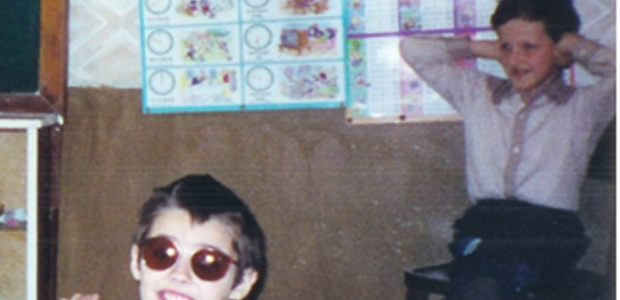Hypersensitivity can often lead to disturbance by certain sensory stimuli – sensory intolerance. These experiences are very individual. The kinds of stimuli that are disturbing vary from person to person.
All senses can be affected. Some children might find many noises and bright lights nearly impossible to bear; for others certain noises (for example, whistling or car horns) and the pitch of some sounds might cause a lot of discomfort. Some describe it as a ‘physical abuse’ because such sounds cause their bodies to tremble and even ache. Besides, not only certain sounds but also any sudden unpredictable sounds can be painful. The fear of noise that hurts the ears is often the cause of many bad behaviours and meltdowns. For example, Alex, a boy with autism, could not tolerate babies crying. Even when a baby was asleep he would ‘attack’ (hit, kick) it. It was easier for him to tolerate the crying when he ‘was prepared’ for it and could see the source of it. It explains his “challenging” behaviour – to initiate (and be in control of) the painful sounds, make them predictable, instead of jumping out of his skin when the baby starts crying unexpectedly and he was not prepared for it.
Some autistic children often find it impossible to touch some objects; others cannot tolerate certain smells, etc.
The most often reported visual sensitivities are sensitivity to bright light, fluorescent light, colours and certain patterns (especially stripes). The light sensitivity in autism overlaps with the symptoms of Scotopic Sensitivity/Irlen Syndrome (SS/IS). Many autistic people confirm that bright lights and sunshine disturb them and often cause distortions. For example, some found it difficult to walk in town on a sunny day – trying to find darker doorways or cover the eyes to get them open enough to see; the glare of sidewalks and shop windows may be too much for them. Others say that on bright days their sight blurs.
For many autistic children and adults, fluorescent light is very difficult to tolerate, because they can see a 60-cycle flicker. Problems with flickering can range from excessive eyestrain to seeing a room pulsate on and off (Grandin 2006). Some children feel sleepy when the fluorescent lights are on.
Sensitivity to colours and colour contrast is another visual problem for some autistic people. For example, some may find it difficult to look at certain colours as they make them feel queasy or even physically sick.
Some autistic individuals cannot tolerate food of some particular taste, smell, texture or appearance (certain colours, for example), or even the sound it produces when they chew it.
The sensory environment is very important for autistic people. They lack the ability to adjust to sensory assaults other people accept as normal.
We have to identify which sensory stimuli may interfere with the child’s capability to cope and either reduce or eliminate them or, if impossible, provide ‘sensory aids’ (tinted glasses, earplugs) or protect the child with a ‘sensory umbrella’ – modifications and adaptations of the environment to meet the child’s needs. Remember, what we think is enjoyable (for example, fireworks) may be fearful or overwhelming to an autistic child.
To address light sensitivity, turn off any unnecessary lighting (especially fluorescent lighting), using lamps rather than overhead lights, low wattage light bulbs and tinted lenses. Other strategies are using sun visors indoors to avoid light and/or glare; experiment with coloured light bulbs of different wattage; teach the child – when overloaded to cover eyes with hands, or look down at the ground/floor.
Be aware of the colours and patterns of the clothes you are wearing and of your perfume.
To desensitise the child to painful sounds, we may record the sound the child cannot tolerate and let him/her to play the sound back at a greatly reduced volume. It is important that the child controls the volume, then the sounds he initiates are better tolerated. Gradually the volume can be raised (Grandin 2006).
References
Grandin, T. (2006) Thinking in Pictures. London: Bloomsbury.
Written by Olga Bogdashina on behalf of Integrated Treatment Services










